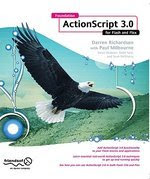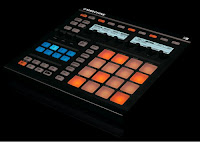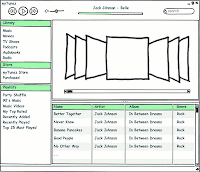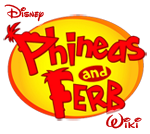Oh My God.
I recently bought a mini-laptop for live music and audio software testing purposes. Normally I'm pretty Mac focused, but a small Windows laptop for on-the-road Acid, Maschine and FL Studio use seemed to be in order. Since most online reviews of laptops tend toward "How Well This Thing Runs Photoshop And Microsoft Word", there was little help for me in finding a good machine at a cheap price.
So, I went trolling the retail outlets. A lot of inexpensive machines either had too-small hard drives, too-ugly screens or too-heavy bodies. Also, most of them felt like crap in my hands. If the machine isn't going to inspire me in any way, why would I bother.
Also, since everything at retail runs Vista, I didn't think I had much to say about the subject. This is where I was wrong. The machine I ended up selecting was an HP Pavilion DV3-1075us: a nifty little machine with tasty looking graphics, a sizeable drive and an OK chipset. The thing I didn't notice at purchase time was the real killer: Microsoft Vista 64-bit Version.
When I got it home, I found the graphics compelling, but the speed rather, um, crappy. A quick peak at the Task Manager told me why: with no applications running, I was using about 40% of the CPU power. Opening any app would immediately spike the CPU usage, and you could literally hear the machine whimper when I put NI's Maschine on it. Two drums sounding (with no effects) was about the limit of its capability. Unacceptable.
So, using the myriad of posts about the subject, I started peeling stuff off the machine. First, it was the zillions of bloatware pieces HP put on it. I realize that this keeps the price low(-ish), but what a pain in the neck. Doing this work made me feel like buying that old Geek Squad shirt I saw at the Goodwill store.
That got me back a little CPU and a lot of disk space, and much more CPU was returned by getting rid of the 30-day Norton Hellhole. I know that viruses are scary and all, but this wasn't going to be a net-machine, so I didn't want to give up a quarter of the functionality to that pigpen. Dumping a lot of HP-specific services (like the one that says "I'm going to eat a whole bunch of CPU - and generate a whole bunch of heat - waiting breathlessly for you to put a DVD in the drive so I can give you a 13" version of a cinema screen") gave me a bunch back as well. I tried dumping the Aero graphics, but geez that looked ugly in comparison.
I got to the point where Maschine, Acid, Sound Forge and other goodies was running reliably. However, this machine has some pretty crap audio stuff going on (again with the "focused on DVD playing" approach), and I wanted to use a higher-quality audio interface. Not a single interface I have - and I've got ten or twelve - would work on this machine. No matter what I did, there either crackling or freezing (or sometimes both), and I was steaming. Add to this being under deadline for reviews on Acid and the Waldorf Blofeld, and you can imagine that I was ready to return the machine (even though the return window was already gone, I suspected I could threaten to throw it through the front window and get at least half my money back).
Then I got to thinking: this seemed like a rather puny machine to be running Vista x64, but there was really no option to run XP (something that HP and everyone else warns about due to unavailable drivers). But could dropping to Vista x86 (32-bit) work out? I spent some time with my friend and coworker Andrew Pask, and we decided that it was worth the effort. I could either download it from MSDN, order an x86 set of disks from Microsoft or buy a retail package. I chose the latter, since "time = money" right now, and set about upgrading at 10pm last night. At 5am this morning, it was done (along with app installs). All of my software works beautifully. Hardware seems to be fine. NI's Service Center doesn't even blow up on me (a remarkable thing)!
In reviewing the evening with my wife, she remarked on how every new version of Microsoft OS inevitably leads to some number of all-nighters. Whether it was the boned-up Windows 3.0, my initial Win95 debacle, helping my dad with WinME or my sister with WinXP, it all added up to one or more sleepless nights. Now this - what crap.
Alas, I can't blame this on Microsoft (much). HP made a plethora of bad decisions with this machine. 64-bit Vista was a big mistake. Ditto for the 80 lbs. of bloatware included with the machine. I've had good luck with HP machines in the past, and I hope to buy from them in the future. But here is my strong recommendation to HP for future computer systems:
1. Find someone that knows something about OS performance and have them choose the version you will use. Microsoft won't help, nor will whatever salesman buckethead that put x64 on the DV3-1075. This is a technical choice - get a good technical person to do it right.
2. Stop with the crapware already. I'm sure the HP Experience is important to you, but having fifty applications fight for control of the optical drive and the audio card isn't helping. I just wonder what people like my parents (60+ years in age) do when they get a box like this. Well, apparently they call someone like me, or the Geek Squad.
3. Norton is no longer a choice. Not that McAfee and friends are doing that much better, but Norton is neither good for the user nor good for your user experience. Most Norton installs represent a full onslaught of dialog boxes, downloads, flashing dock items and blitzed DSL communications. Is this the experience you want?
I'm sure that I represent a negligible portion of HP's business model, and Accountants Worldwide really wants all of this crap on the computers they buy for their droids. But for me (and the 20-or-so people that ask me about what machine to buy), HP is no longer worth considering. Do I like the 1075? Oh sure I do, but at this point, I've probably done more work on it than HP ever did, so I consider it a "DDG DV3-1075us" rather than anything I bought off the shelf.
And that's a pity.
[ddg]












 Today, in our Introduction to Technical Foundations (!) class, there was a discussion about the origins of HCI (Human Computer Interface), going back to the dark ages of Douglas Engelbart and the original mouse. It's hard to believe how close I am in age to that group of Big Brains, but it was great to get the review. Also, it was interesting to see how many of the original "gestures" obviously resonated with the human brain, leading us to embrace the very first methods for graphical selection, movement and alteration.
Today, in our Introduction to Technical Foundations (!) class, there was a discussion about the origins of HCI (Human Computer Interface), going back to the dark ages of Douglas Engelbart and the original mouse. It's hard to believe how close I am in age to that group of Big Brains, but it was great to get the review. Also, it was interesting to see how many of the original "gestures" obviously resonated with the human brain, leading us to embrace the very first methods for graphical selection, movement and alteration.









